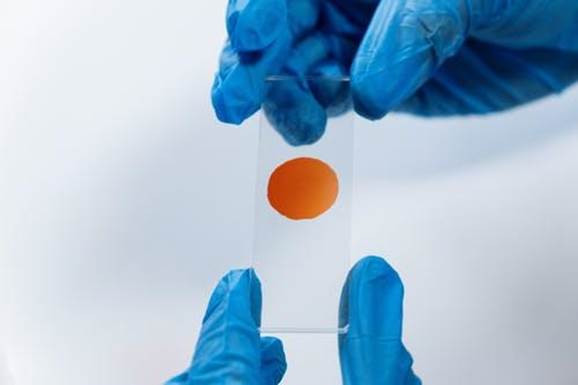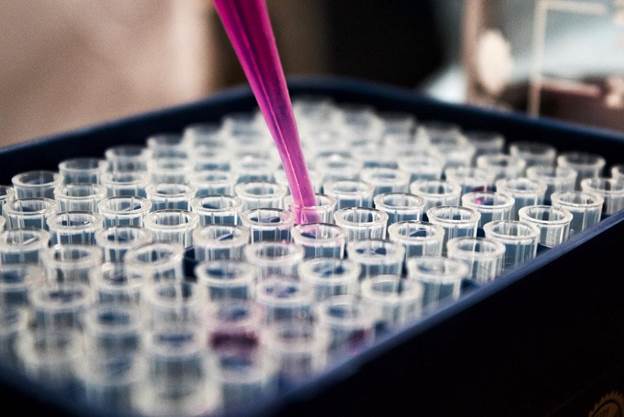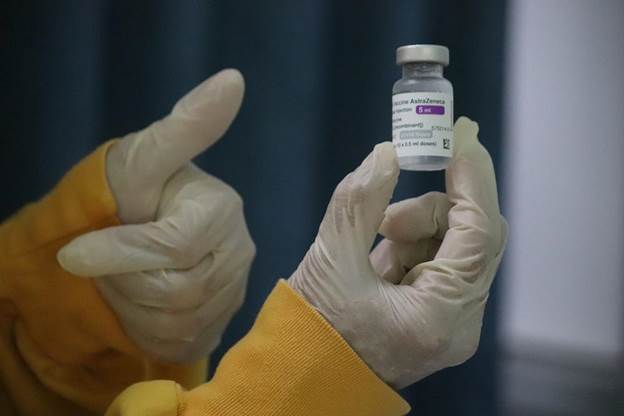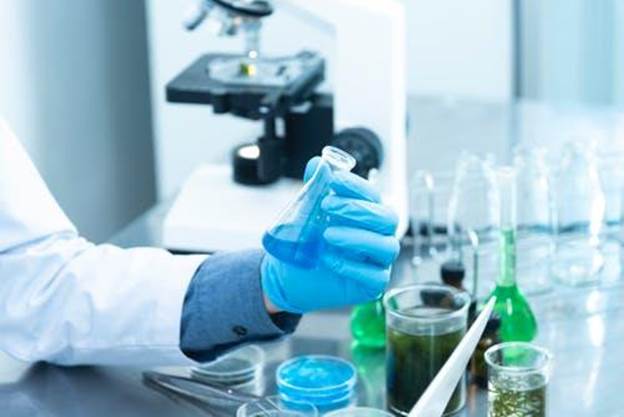What are the Sustainability Challenges in Peptide Synthesis and Purification?
Nov 28th 2022
Recently, there has been a rising interest in therapeutic peptides in the pharmaceutical industry. The numerous applications of peptides have increased interest in their potential uses. However, peptide synthesis has many negative aspects that require using many dangerous coupling agents and solvents. In other words, the synthesis process used today is not environmentally friendly. It is imperative to create greener synthesis processes to change the industrial landscape, particularly in the pharmaceutical industry. This article looks at the sustainability challenges in peptide synthesis and purification: from R&D to production.
What is peptide synthesis?

Several synthetic peptides are essential commercial or pharmaceutical products, from the dipeptide sugar substitute aspartame to clinically used hormones like oxytocin. Today, synthetic peptides that have been improved and modified are now available. Custom peptide synthesis entails synthesizing peptides for commercial and pharmaceutical use. There are two widely used approaches to synthesizing peptides: the liquid (solution) phase approach and the solid phase approach. Here is an explanation of each approach.
1. Liquid Phase Peptide Synthesis
Early peptide synthesis was done in the liquid phase, which required careful handling of protecting groups and numerous difficult workups and isolations. Fischer created the first dipeptide Gly-Gly using this method. However, this method can present difficulties when synthesizing longer and more complex peptides, but it is still effective when synthesizing shorter peptides and fragments.
Due to their low solubility and challenging purification, this methodology is not ideally suited for synthesizing long-chain peptides. Despite being less popular, the liquid-phase peptide synthesis method employs many of the same steps as the solid-phase method. It uses Boc or Z-amino protein to make peptides, which is easier on a larger scale and achieves higher crude purity than the solid phase.
However, the cyclization of a ridged heterocyclic precursor is a laborious part of this liquid-phase peptide synthesis. Because each reaction step necessitates isolating the product peptide from the solution, it can take a little longer. For this reason, liquid phase strategies have been phased out of many laboratories in favor of solid phase strategies.
2. Solid Phase Peptide Synthesis
The solid phase is the most established method used in peptide synthesis. It relies heavily on a chain elongation strategy on an insoluble porous support and permits quick peptide chain fusion through sequential amino acid reactions.
Solid-phase peptide synthesis (SPPS) made removing non-tethered substances like reagents and solvents significantly easier. It made automation possible because it allowed for the iterative execution of subsequent couplings by a predefined set of unit operations. The idea behind solid-phase peptide synthesis is to keep the solution-proven chemistry while introducing a covalent attachment step.
A resin or other substrates are attached to the N-protected amino acids C-terminus using an amide or ester bond in the solid phase peptide synthesis process. This peptide synthesis protocol has many advantages over liquid-phase peptide synthesis when creating synthetic peptides on a large scale.
Chemical Wastes Involved During Peptide Synthesis
Despite being the most popular method for peptide synthesis, the SPPS approach has some drawbacks. Various side effects may happen even when all instructions are followed exactly, depending on the type of amino acid used in the peptide sequence. You'll notice that most chemical substances are environmentally harmful and raise the cost of producing peptides. Here are some chemical wastes from peptide synthesis and purification.
1. Resin Swelling
The SPPS method uses a variety of resins, including polystyrene, pure cross-linked polyethylene glycol, and PS-functionalized PEG. PS resins are more affordable for producing short- to medium-length peptides. PEG-based resins are more expensive and frequently used in synthesizing medium- and long-length peptides and peptides containing challenging sequences.
Many of the newer, greener resins swell considerably in most solvents. Due to this, a greater amount of solvent is needed per mass of resin. For example, recycling these resins has long been a problem, in addition to the substantial solvent consumption and the use of dangerous and environmentally damaging solvents. You can reduce the bead waste in protein production service by altering resin types or using biodegradable ones.
Even though 2-chlorotrityl resin recycling has received the majority of attention, the field of study is still minimal. The ideal resin should be compatible with environmentally friendly solvents and swell enough to allow for efficient reactions while not over-swelling.

2. Coupling Reagents
Despite being one of the most common transformations encountered in the pharmaceutical industry, forming amide bonds still lacks general and reliable catalytic methods.
Since creating an amide bond is difficult, coupling reagents are employed to improve its effectiveness. These coupling agents facilitate the formation of peptide bonds and avoid the racemization of amino acids. However, one of the biggest issues with their use is the formation of water-soluble urea. These coupling reagents generally exhibit poor atom economies.
Benzotriazole derivatives are used in the majority of amide coupling protocols in peptide synthesis at the moment. However, it is undeniable that Benzotriazole, such as HOBt and its derivatives, is explosive, which makes handling, preserving, or scaling up difficult.
The green formation of amide bonds during peptide synthesis still has yet to be a universal solution, particularly for long peptides. A significant challenge is that the complexity of peptides has grown significantly over the past ten years, and many peptide products now contain more than 30 amino acids.
You can resolve this issue by combining Oxyma and COMU, but COMU is the least preferred reagent in SPPS and is not stable in DMF. You must improve the atom economy and compatibility of coupling reagents with various solvents and develop new, environmentally friendly techniques for forming peptide bonds.
3. Protected Amino Acids
The significant unnoticed feature of protected amino acids is that the protection process relies on numerous environmental contaminants. The synthesis, purification, and recrystallization of all these compounds involve using various solvents, considering the preparation of precursors.
Amine group protection in antibody production is accomplished using fluorenylmethyloxycarbonyl chloride (Fmoc-Cl), produced by phosgene and 9-fluorenylmethanol 1 reaction. This latter substance is among the most toxic and contributed to 85,000 deaths during World War I.
These protective groups work effectively in the APPS technique and are compatible with water, which eliminates toxic solvents. Sulfoacetic acid or sulfobenzoic acid is used in the deprotection process, demonstrating the durability of this newly achieved feat.
4. Solvents
In solid-phase peptide synthesis, solvents make up most of the waste produced. DMF, NMP, and in smaller quantities, dichloromethane, and diethyl ether, are the primary solvents used for solid-phase peptide synthesis. These solvents all carry different kinds of risks. For example, DMF and NMP are likely to be restricted because they risk reproductive health.
During peptide synthesis, many solvents are used because the SPPS involves a repetitive sequence of coupling, washing, deprotection, and washing. Because there are numerous condensation steps in organic solvents, the consumption of organic solvents is very high during chemical peptide synthesis.
So, using more environmentally friendly solvents or finding ways to lessen or recycle solvents is of great interest in gene synthesis. The ideal solvent should be able to dissolve all peptide synthesis ingredients, allow for effective amide bond formation and deprotection reactions, and enlarge the preferred solid support.
Recycling these solvents may lessen environmental pollution, but low boiling point DCM has always been problematic, especially for the ozone layer. As a result, cyclopentanone is an excellent substitute for DCM in synthesizing peptides. Similarly, you can replace DMF with the environmentally friendly solvent valerolactone. It can dissolve reagents and amino acids and exhibits a moderately strong swelling effect.
Sustainable Methods

The isolation and purification of peptides in custom antibody service frequently slow the manufacturing process. Also, it produces a lot of high-level aqueous and low-organic waste. You can use several methods to enhance the sustainability of peptide synthesis. One solution is to develop methodologies for the formation of amide bonds. Here are different sustainability techniques.
1. Flow Chemistry in Peptide Synthesis
Flow chemistry has become one of the most popular techniques for producing peptides in the future due to its environmental benefits. It is an efficient way to synthesize peptides because of their advantages, such as safety, the ability to save space, and production capacity. This approach is economical because it uses less solvent and reagent.
Because flow chemistry uses less energy and has faster reaction times, it has a positive environmental impact. Mechanochemistry uses mechanical energy to facilitate reactions between solids. It is an environmentally friendly alternative in custom antibody production for producing short peptides with very little epimerization in high yields.
The use of flow chemistry for hybrid SPPS/LPPS peptide processes is a desirable option. Small fragments produced on resin make excellent process intermediates or regulatory starting materials. These materials would be highly pure, generally stable, and wouldn't need special handling or storage. Using LPPS can separate these fragments from the resin and join them with other fragments.
2. Membrane-Enhanced Peptide Synthesis
The research into membrane-enhanced peptide synthesis, which removes side products and reagents from peptide synthesis, has been rekindled thanks to the development of membranes with greater organic solvent compatibility.
MEPS, or membrane-enhanced peptide synthesis, combines organic solvent nanofiltration with solution-phase peptide synthesis. It is one of the more recent techniques that use membrane peptide synthesis.
The benefit of using this method is that there is no need to add a new solvent or change the solvent. Additionally, it is simple to scale this process beyond kilograms for mass-produced goods in facilities. Finding safer, greener, nonfluorinated alternatives to dangerous trifluoroacetic acid is also necessary.
3. Microwave Irradiation
The two main uses of microwave-assisted peptide synthesis service are to heat the solvent and the reaction mixture and to overcome the protected amino acids' solubility in organic solvents. The process takes less time, and the price of making peptides is lower overall.
Peptide synthesis in water, solid phases, and even solution phases can all be done using microwave irradiation. This is an excellent illustration of divergent polypeptide synthesis, giving dependable access to many peptides. For example, you can resolve significant sustainability issues related to using toxic and dangerous solvents by achieving SPPS in water. Even though there isn't a universal fix, there are some successful cases at room temperature.
You can use microwave irradiation to remove the FMOCS-protecting agent. During the process, Fmoc-protected amino acids act as the reactants in an automated peptide synthesizer, with microwave irradiation serving as the reaction's energy source. As a result, reactions that typically take hours or even days can now be finished in minutes.
Another benefit of microwave-assisted peptide synthesis is using environmentally friendly solvents rather than common solvents like DMF.
4. Native Chemical Ligation Peptide Synthesis
A particular focus on peptide and protein chemistry has been placed on the chemoselective ligation of unprotected peptides and proteins. Since you shouldn't synthesize peptides with over 50 amino acids or large peptides in the solid phase, the research has aimed to create chemoselective ligation and modification methods that connect synthetic peptides to larger synthetic and biological macromolecules.
This convergent strategy may enable higher yields, purer crudes, and less solvent use. The enzyme Sortase A and isotopically labeled human insulin are two more recent examples of native chemical ligation's uses in antibody sequencing services.
Reports have shown the possibility of using ligation synthesis to produce complex and large peptides. This method of peptide production is regarded as environmentally friendly. It will be crucial for the large-scale production of peptides.
5.Novel Technology in Peptide Synthesis

There is a novel technology that can provide rapid peptide synthesis. In just one hour, this system can produce peptides of about 60 amino acids and a dipeptide in just 37 seconds. This technique demonstrates how utilizing modern technology can save both time and money. Even in large-scale processes, this technique for synthesizing peptides is economical. It advances peptide synthesis toward a more environmentally responsible and sustainable future.
When synthesizing peptides during recombinant protein production, you can quickly produce peptide libraries by confining chemicals and solvents to specific regions of Teflon-patterned paper. This is a novel method of synthesizing peptide libraries sustainably for screening applications.
Bottom Line
Peptide synthesis is used in research studies as it applies different biological manufacturing processes. Technology has allowed researchers to produce peptides with maximum accuracy and efficiency. However, producing advanced pharmaceuticals with sophisticated synthetic chemistry while minimizing their environmental impact has become more crucial. There is more pressure to restrict the use of common reagents, solvents, and resins in peptide research because of their effect on the environment.
This article has looked at the sustainability challenges in peptide synthesis and purification. Factors like used resins, solvents, amino acid protective groups, and coupling agents all produce waste that might not be recyclable. Therefore, more funding should be allocated to studying green peptide chemistry.

